How to Fish for Trout in a Lake from Shore
On September 27, 2023 by Big Daddy StandardLooking for a thrilling fishing adventure? Look no further than trout fishing in a lake from shore! Whether you’re an experienced angler or just starting out, this exhilarating activity offers the perfect opportunity to connect with nature and reel in some magnificent trout. But how exactly do you fish for these elusive creatures from the comfort of the shoreline? Don’t worry, we’ve got you covered. In this guide, we’ll walk you through all the tips and tricks you need to know to have a successful trout fishing experience in a lake. So grab your gear, get ready to cast your line, and let’s dive into the wonderful world of shore fishing for trout!
Proper Gear
When it comes to trout fishing in a lake from shore, having the proper gear is essential for a successful outing. Let’s talk about your fishing rod and reel. Opt for a lightweight spinning rod with medium action to ensure you have enough flexibility to cast accurately and feel the subtle bites of these crafty fish.
Next up, we have your choice of fishing line. A monofilament line with a test strength between 4-8 pounds should do the trick. This type of line offers excellent sensitivity while still providing sufficient strength to handle those feisty trout.
Now let’s move on to tackle selection. Start by stocking up on various sizes of hooks – typically size 10 to 14 will work well for trout fishing. Additionally, having an assortment of artificial lures such as spinners, spoons, and soft plastic baits can greatly increase your chances of enticing those elusive fish into biting.
Don’t forget about some basic accessories like needle-nose pliers for removing hooks safely and a reliable landing net to help bring in your catch without any mishaps. By ensuring you have the right gear before heading out on your adventure, you’ll be setting yourself up for trout-catching success!
Lure Choices and Presentation
When it comes to fishing for trout in a lake from shore, selecting the right lure and presenting it properly can make all the difference. Trout are known for their selective feeding habits, so it’s crucial to choose lures that mimic their natural prey.
One popular choice is spinners, which have flashing blades that imitate small fish or insects. These lures can be cast out and retrieved at various speeds to entice trout into biting. Another effective option is soft plastic baits, such as worms or grubs, which can be rigged on a hook with a weighted jig head. These lures should be presented by casting them near underwater structures where trout like to hide.
Remember, when choosing your lure and presentation technique, it’s important to consider factors such as water clarity and weather conditions. Experimenting with different colors and sizes of lures can also increase your chances of success. So take some time to research local bait shops or talk to experienced anglers who know what works best in your area!
Bobber Fishing
One popular technique for fishing trout in a lake from shore is bobber fishing. This method involves using a floating device, known as a bobber or float, to suspend your bait at a specific depth.
To start, attach the bobber about 2-3 feet above your hook on your fishing line. Cast out into the water and let the bait sink to the desired depth before reeling in any slack. The bobber will stay on top of the water’s surface while your bait remains submerged below it. Keep an eye on the bobber for any signs of movement or if it suddenly disappears beneath the surface – that could indicate a trout has taken your bait! Gently reel in and set the hook when you see this happening.
Remember, different types of floats can be used depending on personal preference and fishing conditions. Experiment with various sizes and colors to see what works best for you. Happy bobber fishing!
Bottom Fishing
When it comes to fishing for trout in a lake from shore, one effective technique you can employ is bottom fishing. This method involves using weights or sinkers to get your bait down deep where the trout are likely hiding.
To start bottom fishing, attach a weight or sinker to your line and then tie on your hook and bait. Cast out into the lake and let your line sink down to the bottom. Remember, patience is key with this technique as you wait for the trout to bite. Keep an eye on your rod tip for any signs of nibbles or movement that indicate a fish has taken interest in your bait. With some skill and perseverance, you may just reel in that prized catch!
Retrieving Techniques
When it comes to trout fishing in a lake from the shore, your retrieval technique can make all the difference. The way you retrieve your lure or bait can attract the attention of nearby trout and entice them into striking.
One effective technique is the twitch and pause method. Cast your lure out and then give it a quick twitch to mimic an injured or fleeing prey. Let it pause for a moment before repeating the twitch. This erratic motion can trigger a trout’s predatory instincts and provoke them into biting. Another technique is steady reeling, where you maintain a consistent speed as you retrieve your lure or bait. This imitates natural movement and can entice curious trout to strike. Experiment with different speeds until you find what works best on that particular day.
Remember, each fishing trip may require adjusting your retrieving techniques based on various factors such as water clarity, weather conditions, and even the mood of the fish themselves. Stay adaptable and willing to experiment to increase your chances of success!
Fishing Line and Other Equipment
When it comes to fishing for trout in a lake from shore, having the right equipment is crucial. Your fishing line and other gear can make all the difference in your success on the water.
First and foremost, choose a fishing line that is suitable for trout fishing. A monofilament or fluorocarbon line with a test strength of 4-8 pounds is typically recommended. This will give you enough strength to handle larger trout while still providing sensitivity for detecting bites.
In addition to your mainline, be sure to have quality hooks, swivels, and sinkers in your tackle box. Size 10-14 hooks are ideal for trout fishing as they are small enough to fit comfortably in their mouths without spooking them. Swivels help prevent line twist and tangles while sinkers allow you to adjust your bait’s depth based on where the fish are biting.
Remember, having good equipment can greatly increase your chances of hooking into some beautiful trout when fishing from shore! So make sure you’re well-prepared before heading out on your next angling adventure.
Strategies for Finding Trout
When it comes to fishing for trout in a lake from shore, knowing where to find them is key. These elusive fish can often be found near underwater structures such as fallen trees, rocks, or weed beds. They like to hide and ambush their prey, so casting your line near these areas can greatly increase your chances of success.
Another effective strategy is to look for areas with moving water or current. Trout are known to congregate in these spots as the moving water brings them food and oxygen. Keep an eye out for inflows and outflows from the lake, as well as any natural springs or streams that may be feeding into the lake. Targeting these areas can yield great results when trying to hook a prized trout.
Remember, fishing for trout requires patience and persistence. Don’t get discouraged if you don’t catch anything right away – keep experimenting with different techniques and locations until you find what works best for you. Happy angling!
Weather Considerations
When it comes to fishing for trout in a lake from shore, one important factor that often gets overlooked is the weather. The weather conditions can have a significant impact on the behavior and feeding patterns of trout, making it crucial to consider before heading out.
Keep an eye on the temperature. Trout tend to be more active in cooler water temperatures, so early morning or late evening fishing sessions may yield better results. Additionally, pay attention to wind direction and speed. A gentle breeze can create ripples on the water’s surface, which can make your bait or lure appear more natural and enticing to trout.
Rain showers or overcast skies can also work in your favor when fishing for trout. These conditions provide cover for both you and the fish, making them less wary of approaching your bait. However, be cautious during thunderstorms or heavy rain as these can create dangerous situations near open water.
Understanding how weather conditions affect trout behavior is essential for successful shoreline fishing trips. Keep an eye on temperature changes and utilize wind direction to your advantage. And don’t forget about how rain showers or overcast skies can increase your chances of hooking a big one! So next time you plan a trip to fish for trout in a lake from shore, be sure to take into account these important weather considerations.
Lake Depth Mapping
Understanding the depth of a lake can greatly enhance your chances of catching trout from shore. By knowing where the deeper areas are, you can focus your efforts and increase your success rate. One way to map out the depths is by using a fish finder or sonar device. These devices use sound waves to bounce off underwater structures and provide you with accurate readings of the depth.
Another method is to consult topographic maps or satellite imagery that indicate the contours of a lake’s bottom. These maps typically show areas with different colors or shading, indicating various depths. By studying these maps, you can identify potential hotspots for trout fishing based on their preferred habitat.
Investing time in understanding lake depth mapping techniques will give you an advantage when it comes to targeting trout from shore. So go ahead and explore these methods to improve your fishing experience!
Conclusion and Final Thoughts
H2: Fishing for trout in a lake from shore can be an exciting and rewarding experience. By using the right gear, selecting the appropriate lures, understanding different fishing techniques, considering weather conditions, and utilizing lake depth mapping tools, you can increase your chances of success.
Remember to invest in quality gear that is suitable for trout fishing. A medium action spinning rod paired with a lightweight reel is a great choice. Selecting the right lures based on their color, size, and action will help attract trout effectively. Experiment with different presentations such as bobber fishing or bottom fishing to determine what works best for your specific location.
Mastering proper retrieving techniques like slow retrieves or occasional pauses can entice even the most finicky trout to bite. Pay attention to your fishing line’s strength and visibility to ensure optimal performance on the water.
When searching for trout in a lake from shore, consider factors like structure, underwater features, and areas where food sources may be abundant. Additionally, keep an eye on weather conditions as they can significantly impact fish behavior.
Utilizing technology like lake depth mapping tools allows you to identify potential hotspots where trout are likely hiding. These resources provide valuable insights into underwater topography which helps optimize your fishing strategy.
In summary,
fishing for trout in a lake from shore requires patience,
knowledge of their habits,
and proper technique.
With persistence
and application of these tips,
you’ll not only improve your skills.
but also increase your chances of reeling in some impressive catches!
So, grab your gear,
head out to your favorite spot by the lakeshore,
and enjoy the thrill of catching beautiful rainbow or brown trout!
Happy angling!
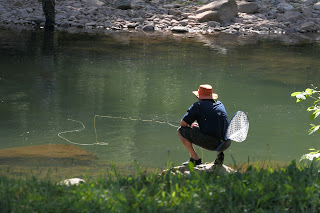
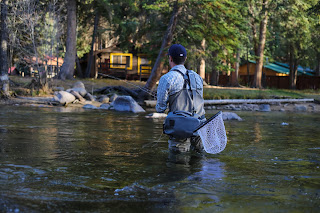
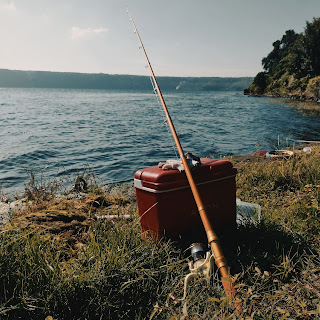
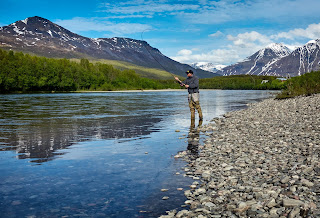
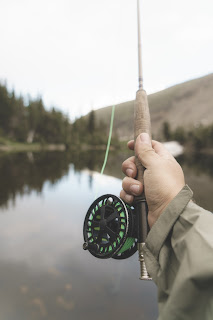
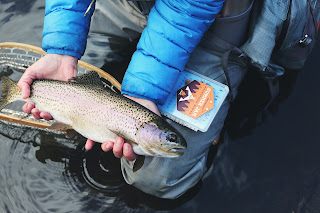

Thanks for sharing. I read many of your blog posts, cool, your blog is very good.